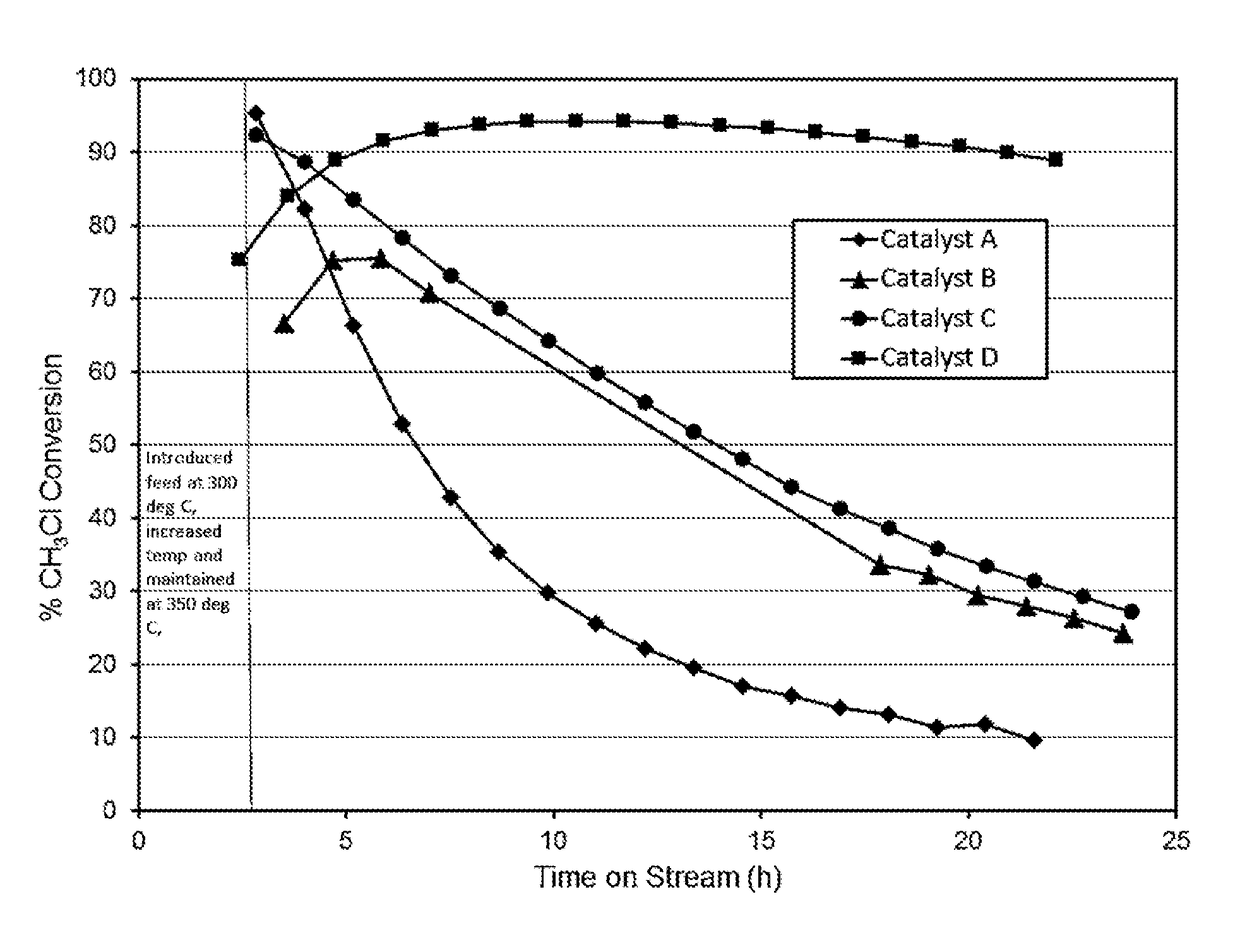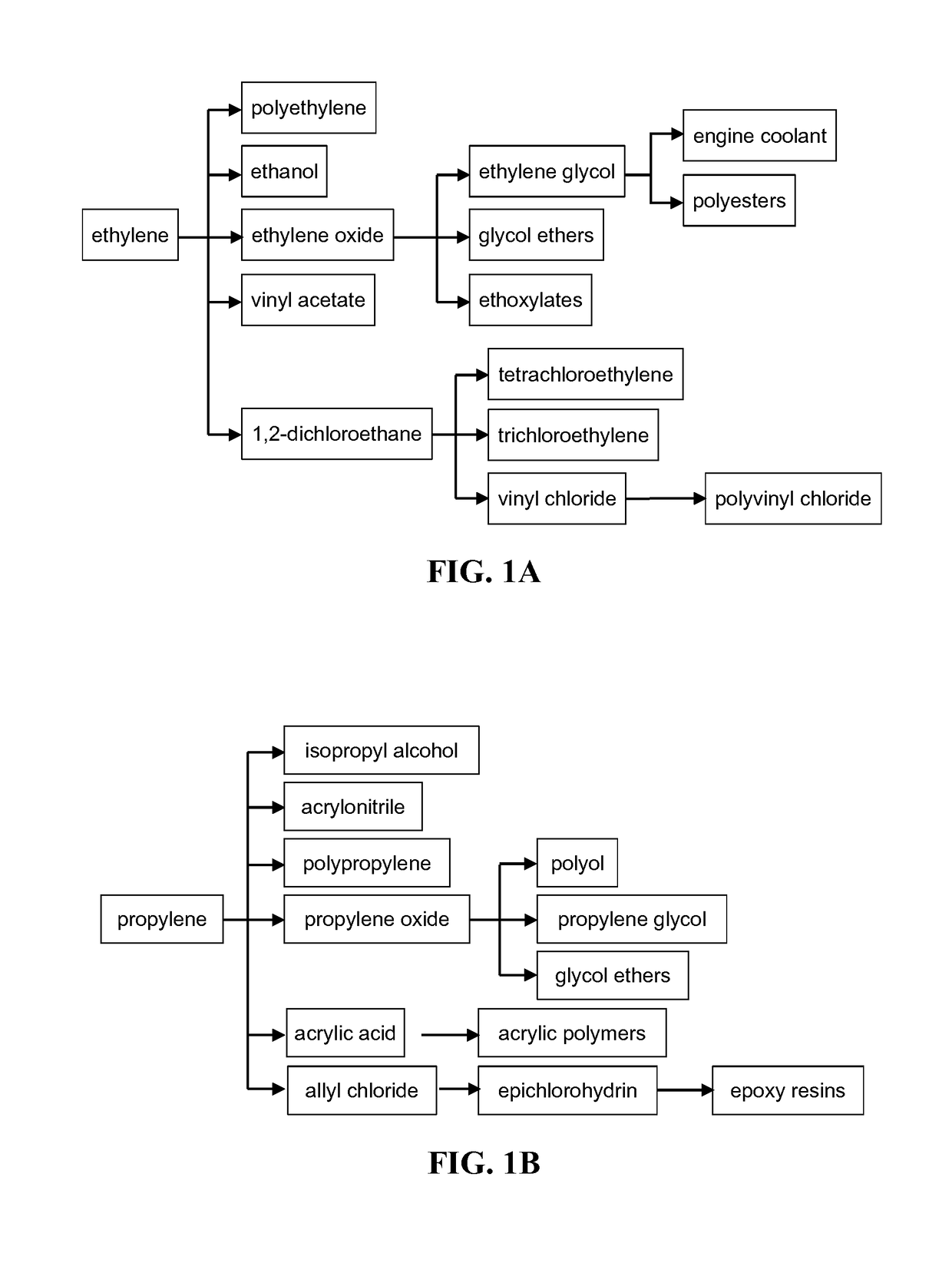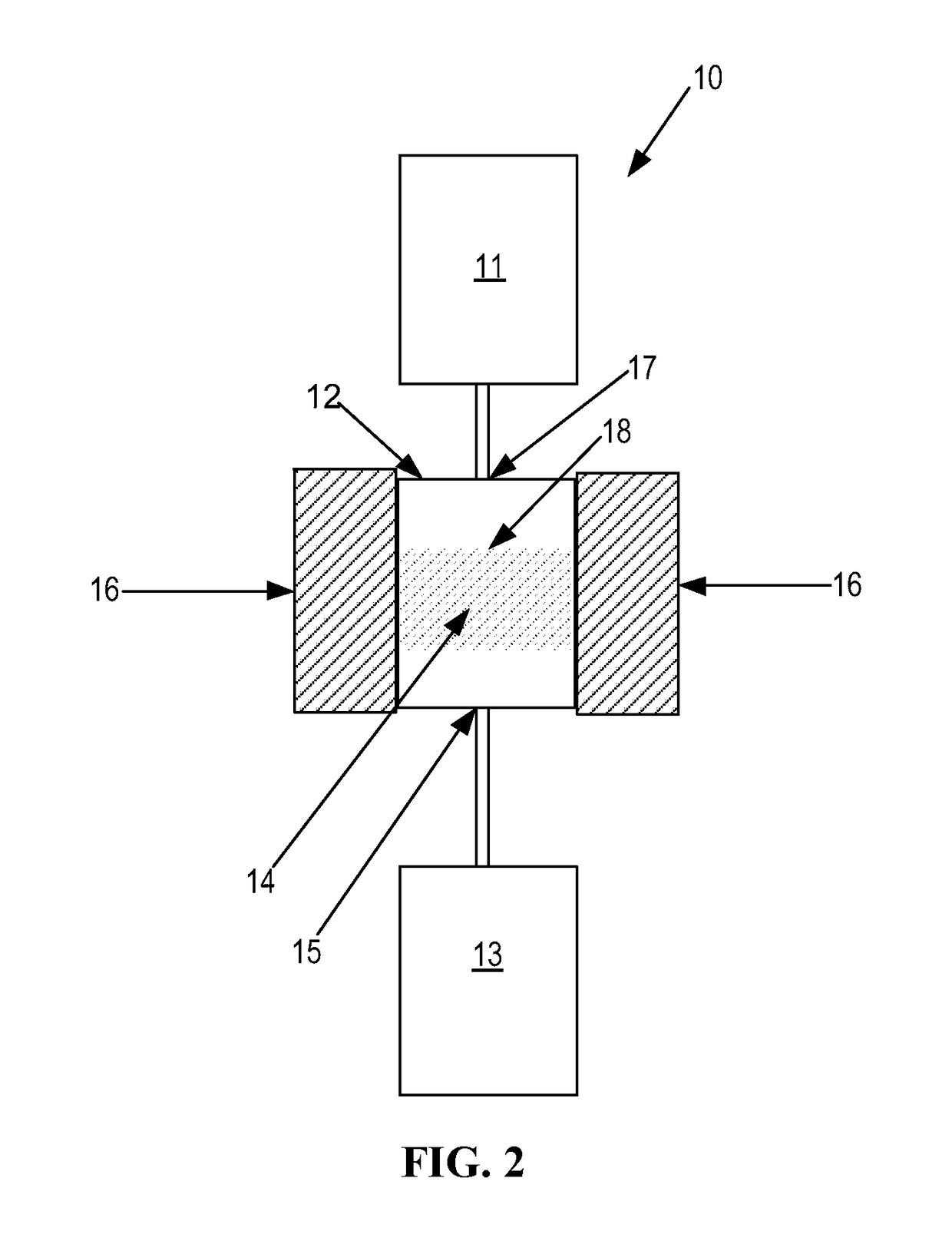Silicoaluminophosphate catalyst for chloromethane conversion
a technology of chloromethane and phosphate, which is applied in the direction of molecular sieve catalyst molecular sieve catalyst, etc., can solve the problems of not providing data on the use of catalyst in the production of olefins, the catalyst is shown to deactivate rapidly, and the catalyst is not easy to be used in the production of sapo-34 catalysts. , to achieve the effect of rapid catalyst deactivation, enhanced stability
- Summary
- Abstract
- Description
- Claims
- Application Information
AI Technical Summary
Benefits of technology
Problems solved by technology
Method used
Image
Examples
examples
[0051]The present invention will be described in greater detail by way of specific examples. The following examples are offered for illustrative purposes only, and are not intended to limit the invention in any manner. Those of skill in the art will readily recognize a variety of noncritical parameters which can be changed or modified to yield essentially the same results. The materials used in the following examples are described in Table 2, and were used as-described unless specifically stated otherwise.
TABLE 2MaterialSourceSAPO-34 (powder form)aACS MaterialColloidal Silica (Ludox SM-30), 30 wt. % SiO2Sigma-Aldrich ®Aluminum iso-propoxide (Al(O - i-Pr)3), ≧98% puritySigma-Aldrich ®Phosphoric acid (H3PO4 (85 wt. % in aqueous))Sigma Aldrich ®Hydrochloric acid (HCl), 37 wt. % HCl in aqueousSigma-Aldrich ®Tetraethylammonium hydroxide ((C2H5)4N(OH)),Sigma Aldrich ®35 wt. % in aqueousWater (deionized)SABIC labsaSAPO-34 obtained from ACS Material, Medford, MA, USA.
examples 1-4
Preparation of Comparative Catalysts A and B
[0052]Catalyst A:
[0053]A SAPO-34 powder was obtained from a commercial source (ACS Material). The SAPO-34 powder was calcined in air at 550° C. for 2 h and designated as Catalyst A.
[0054]Catalyst B:
[0055]was made by combining 27.2 g of aluminum isopropoxide with 36.36 g of water, 13.72 g of phosphoric acid and 2.30 g of hydrochloric acid with vigorous stirring for about 35 min. To this mixture 4.0 g colloidal silica (Ludox SM-30) was added and then 56.24 g tetraethyl ammonium hydroxide was added. The mixture was aged at elevated temperature 80° C. with stirring in a Teflon lined autoclave for a prolonged time (5 days). Crystallization was done in Teflon lined 300 ml static autoclave at 215° C. for 24 h. Formed SAPO material was separated, washed with water, and dried at 90° C. overnight. Material was then sieved through a 40 mesh screen and calcined at 600° C. in air for 3 hours. This was designated as Catalyst B.
Preparation of Catalysts o...
PUM
| Property | Measurement | Unit |
|---|---|---|
| pressure | aaaaa | aaaaa |
| temperature | aaaaa | aaaaa |
| temperature | aaaaa | aaaaa |
Abstract
Description
Claims
Application Information
 Login to View More
Login to View More - R&D
- Intellectual Property
- Life Sciences
- Materials
- Tech Scout
- Unparalleled Data Quality
- Higher Quality Content
- 60% Fewer Hallucinations
Browse by: Latest US Patents, China's latest patents, Technical Efficacy Thesaurus, Application Domain, Technology Topic, Popular Technical Reports.
© 2025 PatSnap. All rights reserved.Legal|Privacy policy|Modern Slavery Act Transparency Statement|Sitemap|About US| Contact US: help@patsnap.com



